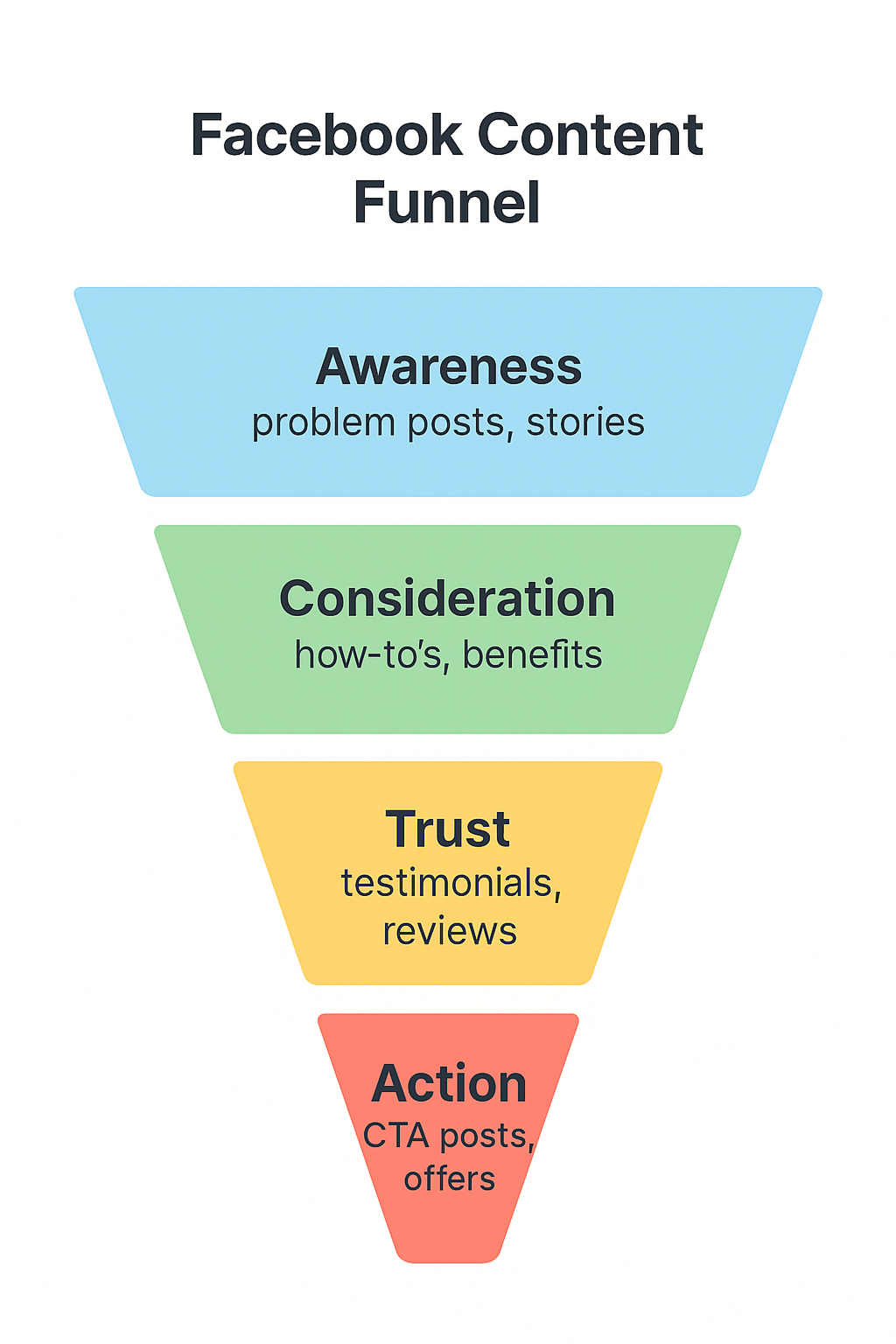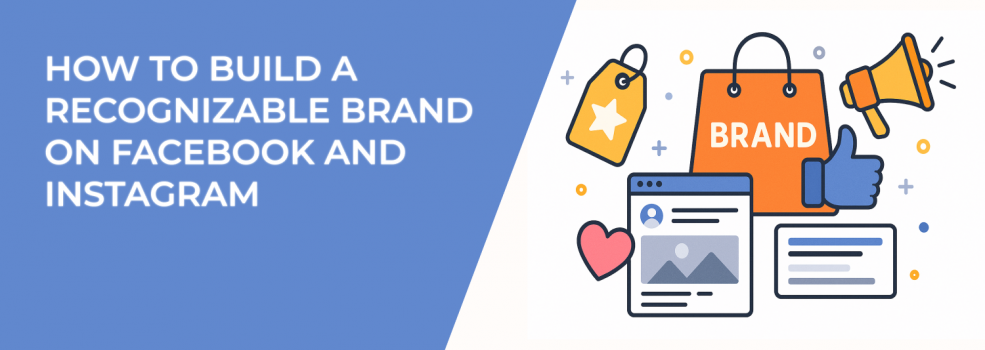Facebook has 3+ billion monthly users — but standing out in that crowd? That’s the real challenge. A “recognizable” brand on Facebook isn’t just seen. It’s remembered. It leaves a visual and emotional fingerprint every time someone scrolls past your content or clicks an ad.
So how do you create that kind of brand? How do you craft a presence that doesn’t blur into the feed?
Let’s break it down with clear strategies, real examples, and detailed tips you can act on today.
1. Nail Down What Your Brand Stands For
If you don’t define your brand identity, the algorithm — or worse, your competitors — will define it for you.

A recognizable brand starts with brand clarity. Before you touch Facebook ads, organic content, or visuals, make sure you’ve answered these:
-
What is your brand’s tone of voice? (Playful, bold, empathetic, rebellious?)
-
What pain points do you solve that others don’t?
-
What emotions should people associate with your brand?
-
Who exactly are you talking to — and what do they care about most?
Want help defining your ideal audience? Follow our step-by-step process in this targeting guide.
Once you're clear on these answers, it becomes easier to maintain consistency across all touchpoints — ads, posts, DMs, comments, and even your About section.
2. Design Visuals That Are Unmistakably You
Facebook is noisy. You have about 1–2 seconds to catch the eye. That means your visuals need to feel like your brand at a glance — not stock photo #542.
Key design tips to boost brand recognition:
-
Use a consistent color palette. This helps build familiarity over time. Pick 2–3 brand colors and stick to them.
-
Apply logo placement rules. Whether it's bottom right or top left, pick a spot and don’t change it.
-
Keep post templates consistent. For recurring content types like testimonials, use a design format your audience will recognize.
-
Use unique brand elements. Think beyond logos — a signature photo style, emoji use, or border shape can set your brand apart.
If your ad images are blending into the feed, it may be a creative issue — but it could also be a delivery one. This breakdown of “Ad Set May Get Zero” explains how targeting can affect ad visibility.
3. Speak Like a Real Human (Not a Brand Voice Generator)
People are wired to notice language that feels personal. Facebook isn’t a boardroom — it’s where people scroll with coffee in hand, half-watching Netflix. Speak their language.
| Bland | Too Corporate | Clear Brand Voice |
|---|---|---|
| Click here to learn more | Utilize now and expand knowledge | Get the details |
| Here at [brand name], we announce the launch of our product | [Brand name] is pleased to inform you about a new product offering | Meet [product name], your new go-to for [problem solved] |
| That’s interesting | The aforementioned information is intriguing | We’d love to hear your thoughts 👇 |
Try this:
-
Cut the filler. Drop “industry-leading solution” and “scalable optimization platform.” No one’s impressed.
-
Write like you’d talk. “Here’s how we can help” beats “Our services are designed to...” every time.
-
Ask questions that don’t feel forced. “What’s your go-to app for focus?” works better than “What productivity tools do you use?”
-
Use contrast. Not every sentence should be short. Mix punchy with flowing. That rhythm keeps people engaged.
And if you’re struggling to write ad copy that connects? Here’s a list of copy formulas that actually convert.
4. Don’t Just Post — Build a Story Arc
Posting daily won’t grow a brand if there’s no structure or progression.

Think of your content like chapters:
-
Start with awareness. Highlight the problem. Share stories. Drop a stat that surprises your audience.
-
Then go into education. Show your expertise, process, or results. Break it down visually.
-
Add credibility. Share case studies, reviews, and community interaction. Social proof matters.
-
Finish with action. It doesn’t always have to be “buy now.” Ask for comments, shares, or downloads to build deeper intent.
Curious about building a full-funnel content strategy? We cover this in detail in our Facebook Ads Funnel Strategy guide.
5. Use Smart Retargeting to Stay Top of Mind
Here’s the truth: most people won’t convert on the first visit. Or even the second.
Which means retargeting is your brand’s memory engine. But how you retarget matters more than just setting it up.
Start with a warm audience funnel:
-
Custom audience of website visitors. Segment by high-intent pages like pricing, comparison, or features.
-
People who watched your videos. Set thresholds like 25%, 50%, or 75% views.
-
Engagement audiences. Include people who liked, saved, commented, or messaged your Page.
-
Group members. If you run a community, sync it to retarget active members with aligned offers.
From there, you can build lookalike audiences based on your highest-converting segment — a strategy that consistently outperforms broader targeting. (If you're unsure when to use Custom vs Lookalike, we explain that here.)
Want to learn how to set this all up? Here’s our complete guide to Facebook ad retargeting.
6. Make Your Brand Easy to Engage With
A strong brand isn't just one people recognize — it’s one they interact with.
Encourage engagement by making your brand feel approachable:
-
Reply fast — and with personality. A branded GIF or a voicey response shows consistency even in comments.
-
Pin user content or testimonials. Let your audience co-create your brand.
-
Use polls, quizzes, and this-or-that posts. Not every post needs to sell — some just need to connect.
When engagement drops, your reach and visibility do too. To avoid that spiral, revisit this piece on why your Facebook ads may not be converting — it covers both creative and behavioral fixes.
7. Monitor, Measure, and Refresh Strategically
Branding isn’t static. What made you memorable six months ago may feel stale now.
Track these metrics monthly:
-
Frequency — Are people seeing your content too often without acting?
-
Engagement rate — Is your audience liking, sharing, commenting — or just scrolling?
-
Ad recall lift (if running Brand Awareness campaigns) — Facebook offers this for larger brands, but you can simulate it by surveying or checking branded search volume.
-
Creative fatigue signals — If CTR drops and cost per result rises, swap your creatives.
When you analyze your data, look for patterns — not just performance. Which posts create the most conversation? Which ad formats get saved or shared?
Need help navigating campaign objectives that match your brand goals? This guide to Meta Ad Campaign Objectives is essential reading.
Final Thought: Familiarity Isn’t Built Overnight
Your goal isn’t just to be seen on Facebook — it’s to become expected. Trusted. Recalled.
That doesn’t happen with random posts or one clever ad. It happens when your visuals, voice, targeting, and content all sync up to say: “You know who we are. And we’re not going anywhere.”
Are you showing up with that kind of clarity and consistency?

